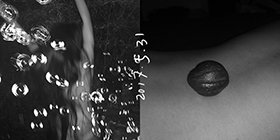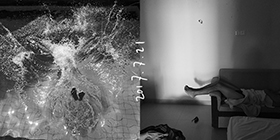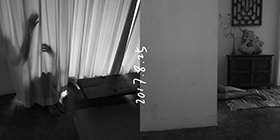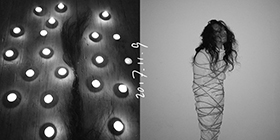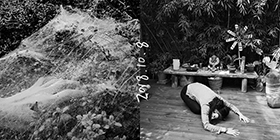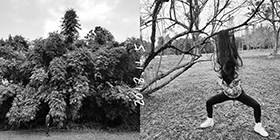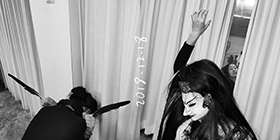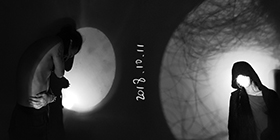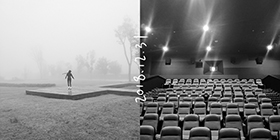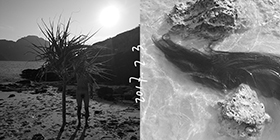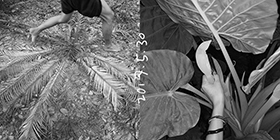Interweaving the Strange and the Ordinary: Liu Ke’s Human Landscapes of the Three Gorges
Gu Zheng
Photography is a way of recording strange tales. This strangeness highlights the everyday, but it also spontaneously bursts out of ordinariness. This strangeness may be easy to identify, and once it is presented by a photographer, it becomes easier to accept. From its content, its external form, and the way it happens, this strangeness is often manifested in sudden events or things that obviously and absurdly contradict the everyday. Then, strangeness is recorded in photography, and disseminated and shared in various ways. We accept and anticipate this strangeness, and we have been trained (instructed) in the ability to identify and appreciate it.
However, the potential strangeness in real life must be discovered by the photographer, who must record this strangeness in photographs. What kind of strangeness is this? Strangeness may often be covered by a surface sensationalism, such that things and states must be unearthed. This requires the photographer to establish a relationship between a thing and its surroundings through the framing of the picture; this gives the picture its strangeness and allows us to vividly comprehend just how strange it is. This strangeness is often disconcerting, testing our ways of viewing reality and objects and challenging our everyday experience; it departs from our fixed aesthetic standards, but it is also something that shakes our self-confidence and self-respect. Excellent photographers can discover and capture strangeness despite the countless other things happening.
This kind of strangeness does not exist for the sake of ordinariness; it has always existed as another form of ordinariness. The strange and the ordinary are one another’s opposites, serving as the ordinary and the strange for one another. However, it is precisely because of a photographer’s vision and capabilities that we can discover and further comprehend the profundity of reality and the absurdity of worldly things.
Beginning with a human perspective, Liu Ke’s Three Gorges landscapes focus on the clues that exist in reality that he could follow after he arrived at the site, which lead us into spaces that explore the relationship between the past and present. His Three Gorges images interweave strangeness and ordinariness, inspiring ideas about future existences. His pictures of human landscapes are not simple evocations or associations; they are the visual pursuit and development of the intrinsic logic behind the ecosystems and millions of people’s livelihoods affected by the Three Gorges Dam. As a photographer, what he can pursue and what he can fix on film or present on CCD are simply signs of light hitting the surfaces of objects. However, these signs are more than unresolved surface images; they are saturated with traceable images of humanity’s past behavior and future possibilities. Therefore, they investigate threads of reality, the clues that hide within the web-like surface of superficial phenomena, but these signs can provide those who come after us with pictorial indices for the development of deeper research. These pictorial indices of human actions, psychologies, and mentalities, like Liu Ke’s Still Lake series, are two-dimensional, reflecting the superficial absurdity of reality, but they are also three-dimensional and have historical depth. There are two additional things behind these images. First, the pictures record the strangeness created by human behavior. Second, Liu Ke reacts to the psychological states shaped by the strangeness of this reality and the realities behind these psychological states. This reaction includes his framing of reality and his split-second decisions. What we gain from his framing and decisions are what Freud called “the uncanny”—it is precisely what summons our visions of reality. At the same time, a passion for understanding and interpreting reality inspires these visions.
The Three Gorges project was a wrestling match between humans and nature. The local people who were passively swept up in this project do not truly understand what it meant, but they had to accept the actual effects that this project had on their lives. For individuals, families, clans, and localities, leaving home was a major event, but these people were just listed as numbers on a project budget. Thus, the spontaneous, uncontrollable life changes caused by national will were blows to local people who were accustomed to a certain kind of ordinariness. This blow was reflected on both the material and spiritual levels, with far-reaching influence; it manifested as a series of strange things. Liu Ke saw many things during a particular period in the Three Gorges; the strangeness appears after the ordinariness is attacked, shaken, and even destroyed. These strange things reflected changes to real landscapes and to psychological states, as well as special changes that took place under the combined effects of both landscapes and psychologies. They occurred and emerged; they were perceived by Liu Ke, and they shaped and emphasized images in which the strange had meaning for the ordinary. All of the elements in these images were clear or chaotic, complex or simple, estranged or intimate, heterogenous or pure, odd or dull. They affected one another, absorbed one another, disturbed one another, and supported one another; in the end, they helped one another. Casting these opposing things into a single entity requires the photographer’s talent, agility, and sensitivity. Liu Ke wants to convey to us the strangeness that arises in the lives of contemporary people and the odd atmosphere that pervades reality after ordinariness is broken by outside forces and external causes. This state is related to local conditions, which today are being changed forcibly, and this atmosphere is caused by the changes in the surrounding environment sparked by shifts in nature and reality, as well as a unique environment that influences people’s spirits. Liu’s photographs have a close relationship with his lived environment. The Three Gorges landscapes that he presents reflect his relationship with reality, and they are a psychological tug-of-war that developed between Liu Ke and the interactive relationships with the Three Gorges ordinariness that had since become so strange. They confirm one another with visual considerations and presentations.
Liu Ke’s Three Gorges landscapes are images woven of a rich array of social and human information. This is a new kind of documentary photography focused on non-events. He approached the concept of Three Gorges landscapes from countless sides, and through the random, fragmentary visual impressions taken with a camera, he reconstructed memories buried in our pasts. The power of photography lies in documenting changes in reality, as well as its magical ability to fuse records and memories. As they document changes in reality, many photographers often seek out relationships between records and memories. These relationships are associated with the essence of photography. By weaving images in which the strange and the ordinary coexist, his works transcend the boundary between records and memories, which provides more prospects and possibilities for the representational and expressive functions of photography.
